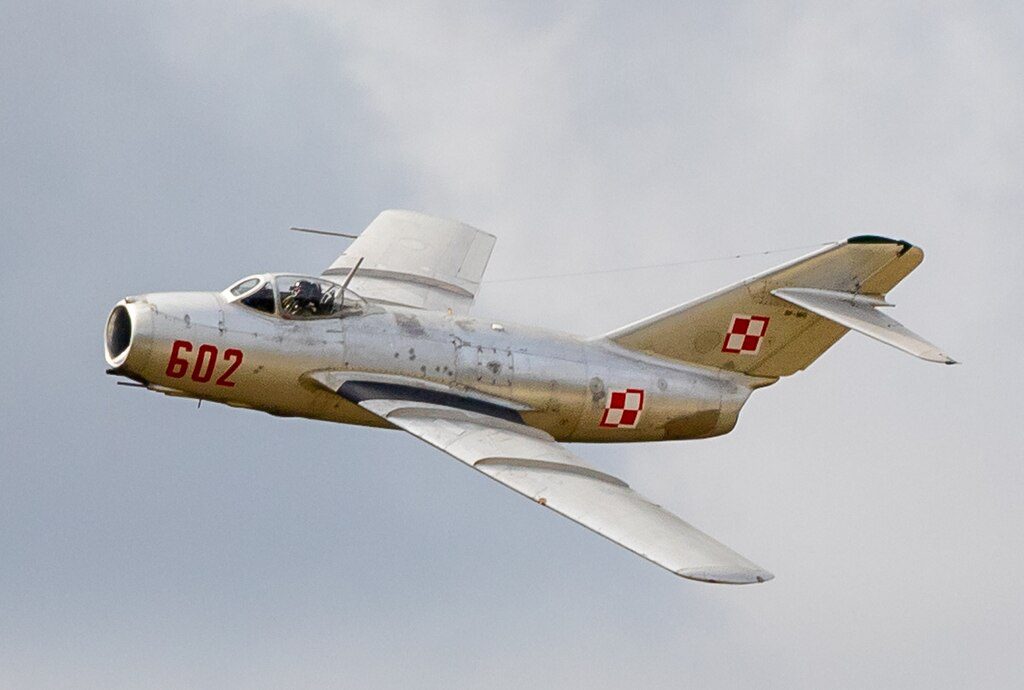
After our first article focusing on the Mig-9, next up is the legendary fighter jet, the Mig-15 history.
After the MiG-9 fiasco, Soviet aircraft design took a major leap forward. With the Cold War in its infancy, speed and altitude were the most needed things for air power. The legendary aircraft that saved the Soviet air force during the height of the Cold War was born: the Mikoyan-Gurevich MiG-15. This aircraft revolutionized air combat.
The Birth History of The Legend
After the first jet aircraft tests, Soviet engineers knew better what they wanted. They turned to captured German technology and developed advanced aerodynamic concepts, including sharply angled wings to achieve high speeds. But the most important resource came from a surprise source.
Surprisingly, after the war, the British government sold advanced Rolls-Royce Nene jet engines to the Soviet Union. Soviet engineers reverse-engineered this powerful engine. The result of this work was the Klimov RD-45. This engine, combined with the innovative airframe, gave the MiG-15 its incredible performance. Soviet engineers launched the first prototype in late 1947 and started serial production just a year later.
Korean War: MIG-15

The MiG-15 Fighter History is marked by its dominance in the Korean War and its lasting impact on aerial combat. During the Korean War, the MiG-15 made its mark in aerial combat. When it first fired its weapon over the Korean Peninsula in the late 1950s, it shocked United Nations forces. Its speed, rate of climb, and high service ceiling were superior to early Allied fighters such as the F-80 Shooting Star and F-84 Thunderjet. It was ruthlessly destroying Western aircraft in combats.
One of its primary missions was to attack and disable B-29 Superfortress bombers. Engineers equipped the MiG-15 with powerful cannons, usually one 37 mm and two 23 mm, making a single hit enough to bring down an enemy. The airspace over northwestern Korea soon became known as “MiG Alley“, the scene of intense air combat.
The Sabre Fighter Showdown
In order to overcome the superiority of the MiG-15, American F-86 Sabre aircraft were brought in. The air battles between these two aircraft are still legendary. The two aircraft represented different economic systems as well as different design philosophies. The MiG-15 generally climbed faster and could reach higher altitudes. Its artillery guns were deadly if they hit.
However, the F-86 Sabre was generally more controllable at transsonic speeds and in dives. Its six .50 caliber machine guns allowed it to fire at a high rate of fire, leaving its opponents with no chance. The Sabre also featured a superior sight. Battles in MiG Alley were often decided by pilot skill and tactics rather than aircraft performance alone. Experienced Soviet and Chinese pilots flying MiGs proved to be tough opponents.
A Global Legacy
Aircraft manufacturers have produced the MiG-15 (Fagot) in greater numbers than most other jet aircraft in history. An estimated 18,000 or more have been built, including variants. Its simple, robust design made it reliable and relatively easy to maintain.
It served in the air forces of dozens of countries in the Warsaw Pact, Asia, Africa and the Middle East. The plane still serves as a trainer in primitive squadrons such as the North Korean air force. It must be inspiring to think that this symbolic aircraft of the Cold War is still roaring somewhere.
In our next article, we will continue our journey with the Mig-17 aircraft, which was developed from the Mig-15. Stay tuned.





